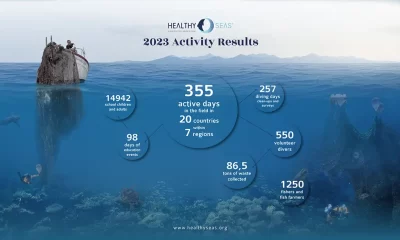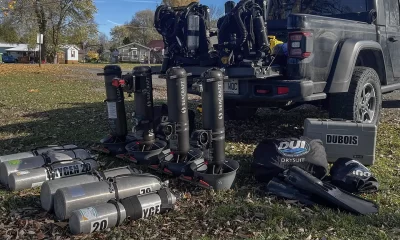News
Harnessing the Power of ‘Educated’ AI to Improve Diving Safety
By Gareth Lock
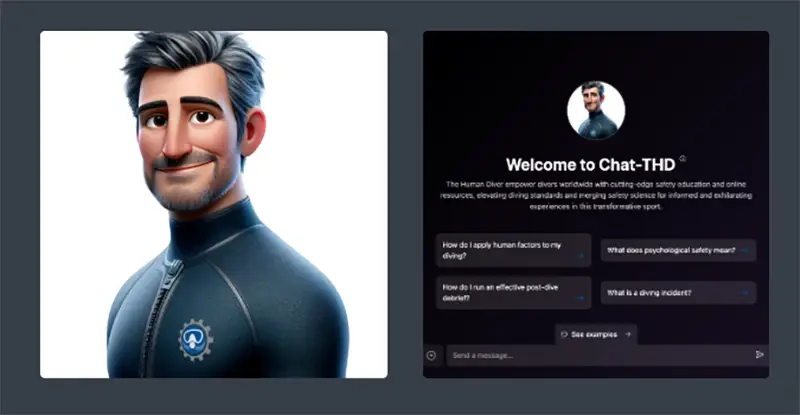
The Human Diver has always been at the forefront of delivering practical and theoretical education in the diving domain. In January 2016, highly-experiential computer-based simulators (GemaSim) were used to bring the intangible concepts of human factors, non-technical skills, and psychological safety to life for divers in the classroom. In June 2016, a flipped-learning approach was taken where a chunk of theory was delivered via the Kajabi learning management system in face-to-camera delivered modules in the Micro-class before GemaSim classroom sessions.
In February 2021, the first 10-week live webinar series was run which involved live zoom calls with a community approach for shared learning between the sessions. Since then, eight more have been completed. In May 2020, the documentary ‘If Only…’ was released with a workbook that would allow dive centres, instructors, and non-divers to run an interactive workshop to bring the concepts of human error, just culture, and error producing conditions to the fore when looking at how adverse events occurred. In September 2021, the first Human Factors in Diving conference was run online. While it was a financial loss (it was an experiment) it provided significant content for the diving community.
In October 2021, the micro-class became the Essentials of Human Factors in Diving. It was a complete rewrite; it was based around the ‘If Only…’ case study—and a number of other case studies—showing how success and failure are linked to elements relating to human factors and non-technical skills—concepts that still haven’t been formally included in any training agency materials.
In February 2024, The Human Diver released another ‘first’ for the diving industry. A large language model (AI) called Chat-THD. This model is a bespoke tool developed by a company called Loopin. It isn’t the same as a general language model like Bing or ChatGTP3.5/4.0, instead, it has been trained on content specific to The Human Diver, with more than 400,000 words of Human Diver content!
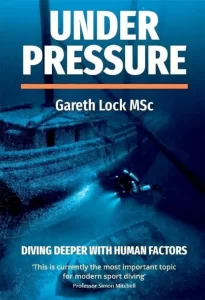
These words have come from the book Under Pressure, 250+ blogs on the Human Diver site, the transcripts from the Essentials course plus the live 10-week webinar series, plus the transcripts from 10s of presentations and podcasts that have been delivered by myself and others in The Human Diver team. Finally, a number of academic/research papers written and submitted by me prior to—and as part of—his MSc in Human Factors and System Safety are included. This means that the responses provided are aligned with the tone, values, and beliefs of The Human Diver.
In fact, one AI/LLM specialist commented that the responses provided by ChatGPT3.5/4.0 are very much aligned with modern Western values of retribution, accountability, and compliance, whereas the responses to the same questions from Chat-THD are about curiosity, learning, and a restorative approach.
The tool has been developed to meet the following use cases:
- Continued Education and Spaced Repetition. Peter C. Brown, the author of Make it Stick highlights that spaced repetition is a key way to improve learning. This is contrary to many learning systems (and human nature) which focuses on mass learning/cramming. While this can help pass an exam on a particular day, the ‘learn and dump’ approach doesn’t help students maintain long-term knowledge. This gradual loss in information, unless repeated, was identified by Ebbinghaus. He showed that unless information was recalled regularly, it would get harder and harder to recall. Ebbinghaus’s work focused on nonsensical data (random letters), so the fade rate was high, but the premise holds true: Use it or lose it. Neuroscience theories show that as information is encoded, recalled, used, and re-encoded, then the myelin coating the synapses (which allows data to be transported in the brain) gets stronger and makes it more likely information can be recalled when needed.
Chat-THD helps with continued reinforcement or spaced learning because it is an accessible tool where the students can ask conversational-type questions and get conversational answers based on the sciences of human factors and system safety. This dialogic approach means that users can explore multiple avenues.
- Developing training materials for instructors, dive centers, and training agencies. One of the ultimate goals for The Human Diver is not to primarily get involved in the delivery of face-to-face training at the user level, but rather to work with training agencies to develop their senior trainers/course directors and provide editorial support for training materials. This means that agencies need to develop their own content to go into instructor development and diver training. Organisations can generate the primary materials, tools, and concepts via consultancy support or Chat-THD.
Users can provide Chat-THD with questions focused on specific scenarios, or the model can explain concepts or tools in a practical manner that divers and diving instructors can relate to. It can do this because it has been trained using hundreds of different pieces of content (some theoretical, but mainly practical) and can use the power of storytelling to bring theory to life.
- Marketing or education content for social media. Chat-THD will not be able to write specific articles for you, but you can pose a question like “How do I deal with an instructor who won’t listen to me?” or “How do I work with a dive instructor who just called me ‘stupid’ for something that I didn’t know what the ‘wrong’ thing to do?”
Chat-THD will normally give an answer in the following format: scene setting/context, then four or five short paragraphs of approximately 100 words, and then a summary or conclusion wrapping up the key points. The tone is not flowery but matter of fact—just like Gareth Lock, whose materials inform most of the model’s language training.
- Explaining key or critical concepts. Human factors as a discipline is general in nature and specific in application. It also contains many new concepts and words for the diving community. Without a common vocabulary and framework, it is easy to miscommunicate and misunderstand concepts. For example, recent research has shown that only 25% of 650+ survey respondents from across recreational and technical divers and instructors knew what a Just Culture was. Most of those had previously had some form of human factors training, either by The Human Diver or outside of the diving domain in aviation or healthcare.
Chat-THD has been taught using reference materials from the science of human factors and safety science, so the definition of terms will be consistent with good practice from high-risk industries like aviation, healthcare, oil and gas, and the nuclear sector.
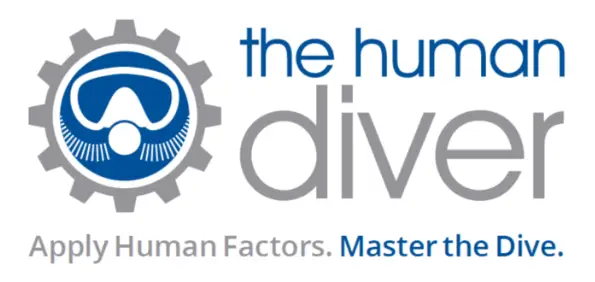
The Human Diver is a small organisation with a small number of instructors dotted around the globe delivering change by delivering education and providing tools and a new vocabulary to improve diving safety. We do this by filling in the gaps that exist in training agencies’ training content, manufacturers’ materials, and divers’ knowledge concerning decision-making, situation awareness, communication, teamwork, leadership/followership, psychological safety, and just culture.
Our goal is to meet the students’ needs for safe and enjoyable diving. Fundamentally, every dive should end with no one being physically, physiologically, or psychological hurt. As a community, we can help with this by creating an environment where learning—not blaming or shaming—happens following an unwanted outcome or adverse event. However, this learning culture cannot exist unless there is a clear understanding and personal and organisational acceptance that divers (as humans) will make mistakes, lapses, and slips on a regular basis, and that most of the time they don’t end up with an injury or fatality.
Absence of an unwanted outcome doesn’t mean it was a safe dive, and the absence of data showing this doesn’t mean the industry is ‘safe.’ Furthermore, focusing on the ‘rule breaking’ or ‘violations’ of those involved without understanding the context and the system divers operate in means that the issues will continue. If ‘rules’ are consistently being broken, this indicates systemic weaknesses, not individual fault. Recent research has shown that divers are more willing to share stories if they have context (which includes ‘violations’) and, at the same time, they don’t necessarily understand the context or the influencing factors that can lead to an adverse event.
This is where Chat-THD can help: by filling in the gaps surrounding the basics of human factors, non-technical skills, and the conditions or factors that can lead to an event. It’s a win-win situation. Divers learn more about how to prevent an event, and if something does happen, they are able to explain it in a manner that allows more learning to happen.
Chat-THD is now available to all graduates of Essentials, the 10-week live webinar series, and the two-day face-to-face programmes via a gateway. If you are a graduate of these courses (you have finished the ‘Certificate module’), visit your Human Diver library (www.thehumandiver.com/library) and find the new course in there which will explain how to get access to your Chat-THD account and give you examples of how to use it. If you are not a graduate, you can subscribe at www.thehumandiver.com/chat-thd for $5 per month, cancellable at any time.
DIVE DEEPER
InDEPTH: Harnessing AI To Revolutionize PTSD Therapy Through Diving by Diana Giorgetti.

Gareth Lock has been involved in high-risk work since 1989. He spent 25 years in the Royal Air Force in a variety of front-line operational, research and development, and systems engineering roles which have given him a unique perspective. In 2005, he started his dive training with GUE and is now an advanced trimix diver (Tech 2) and JJ-CCR Normoxic trimix diver. In 2016, he formed The Human Diver with the goal of bringing his operational, human factors, and systems thinking to diving safety. Since then, he has trained more than 450 people face-to-face around the globe, taught nearly 2,000 people via online programmes, sold more than 4,000 copies of his book Under Pressure: Diving Deeper with Human Factors, and produced “If Only…,” a documentary about a fatal dive told through the lens of Human Factors and A Just Culture.



























